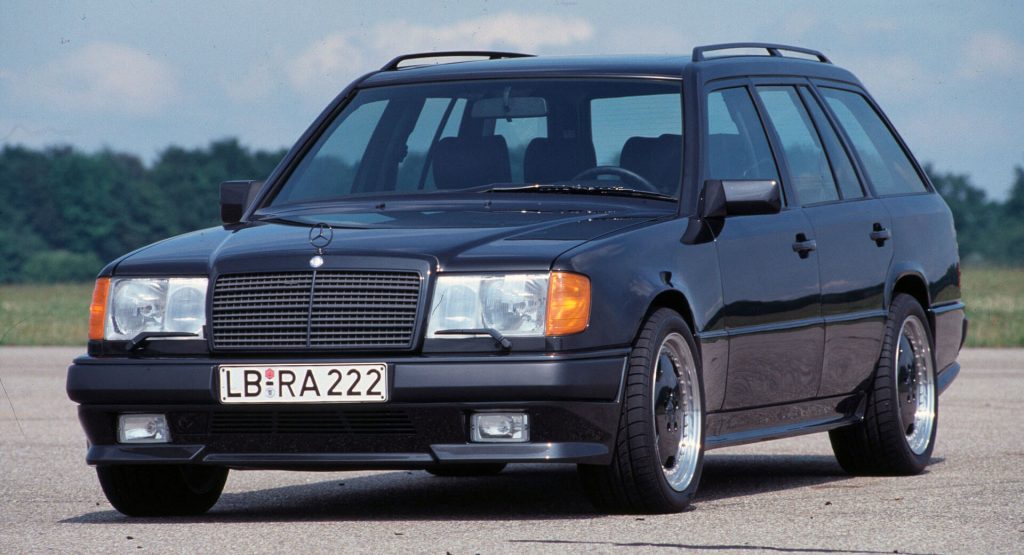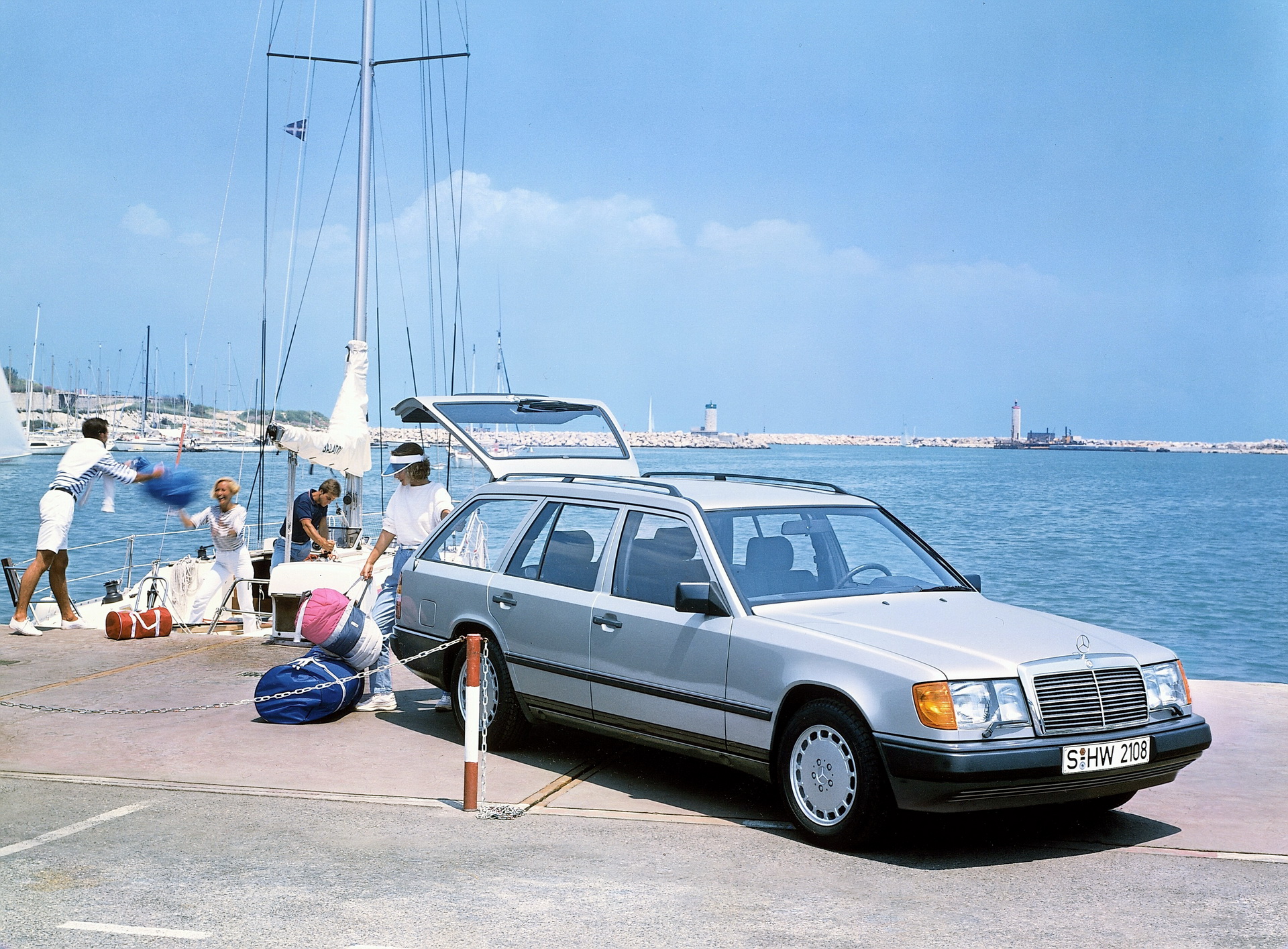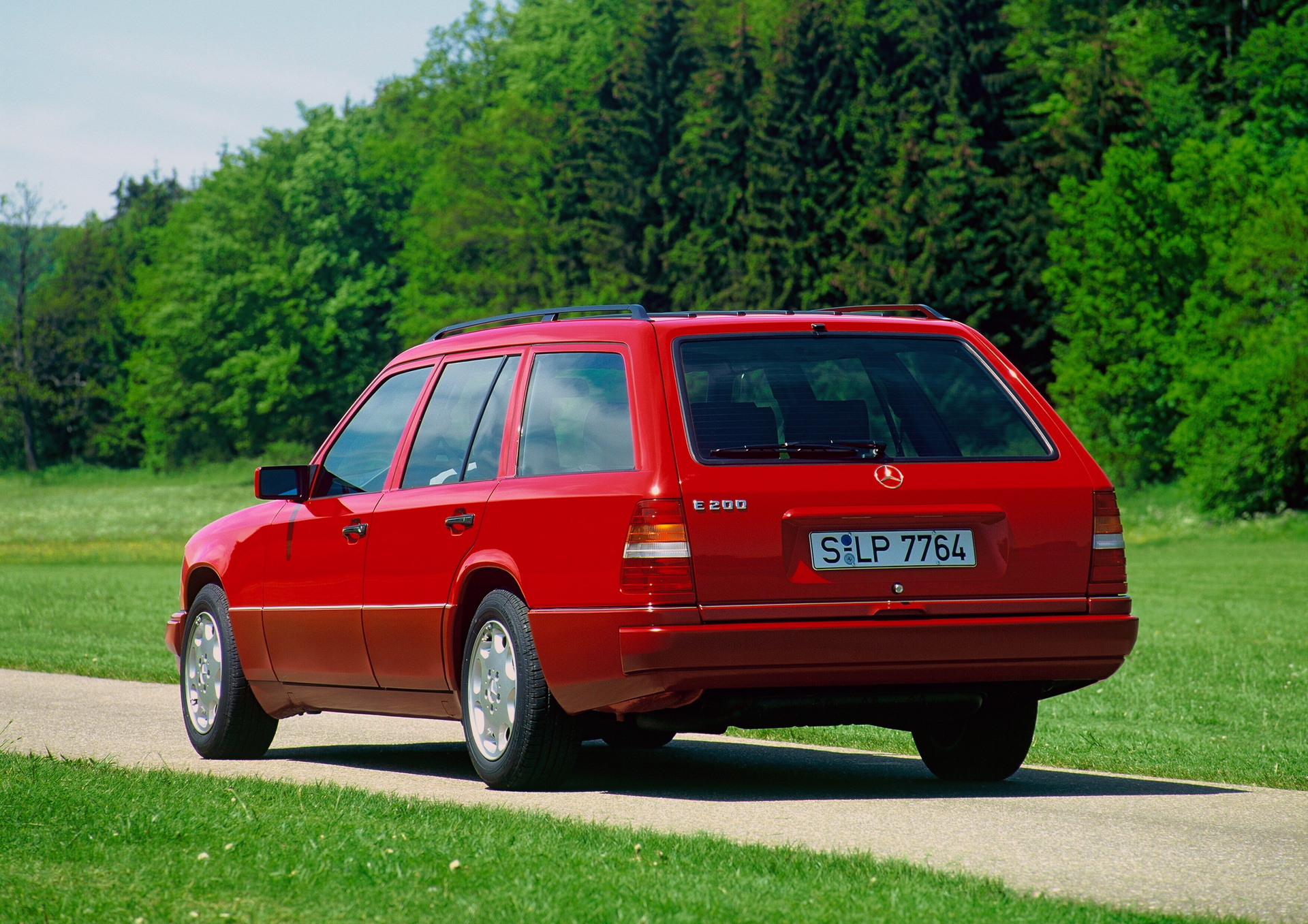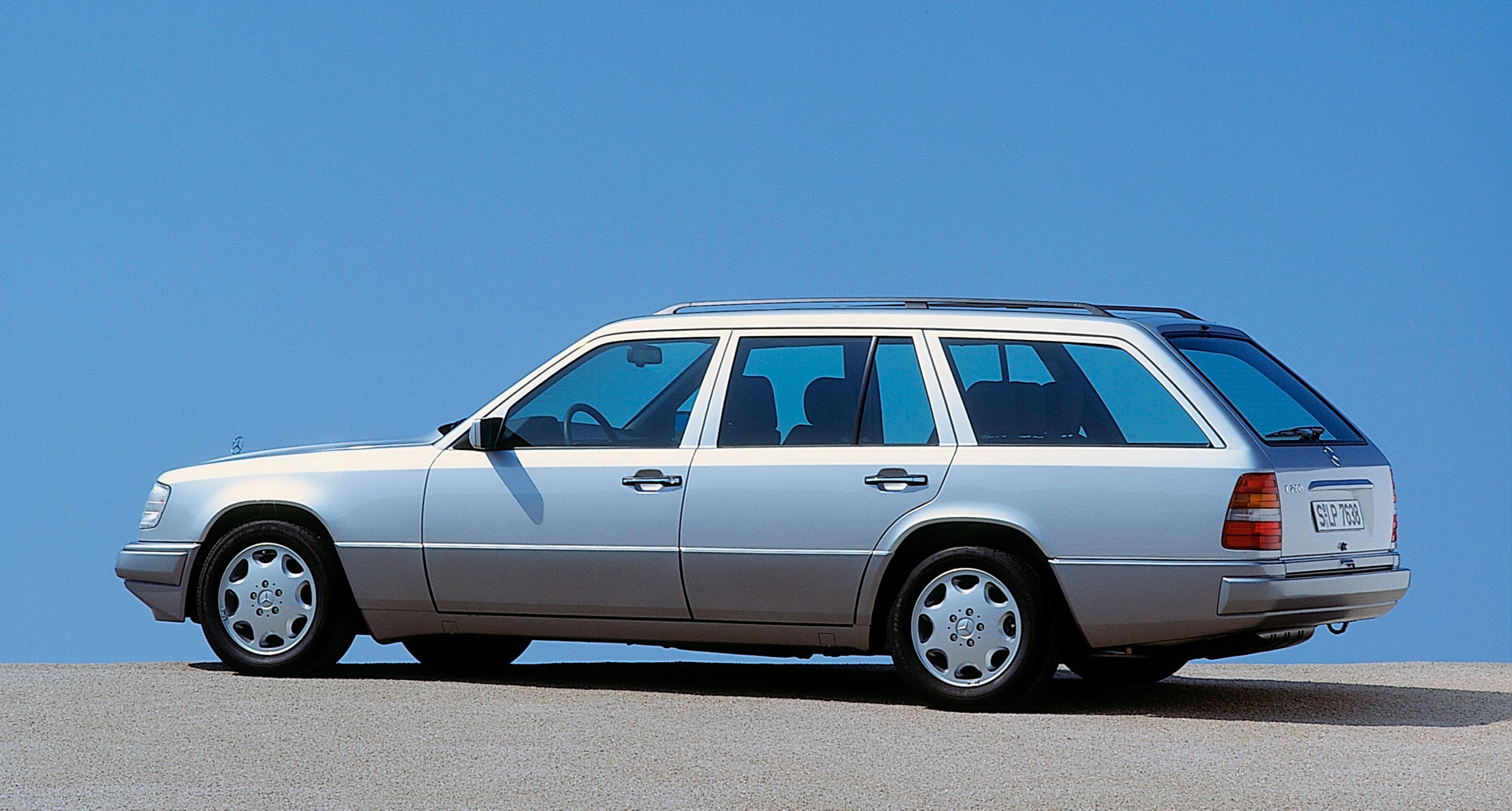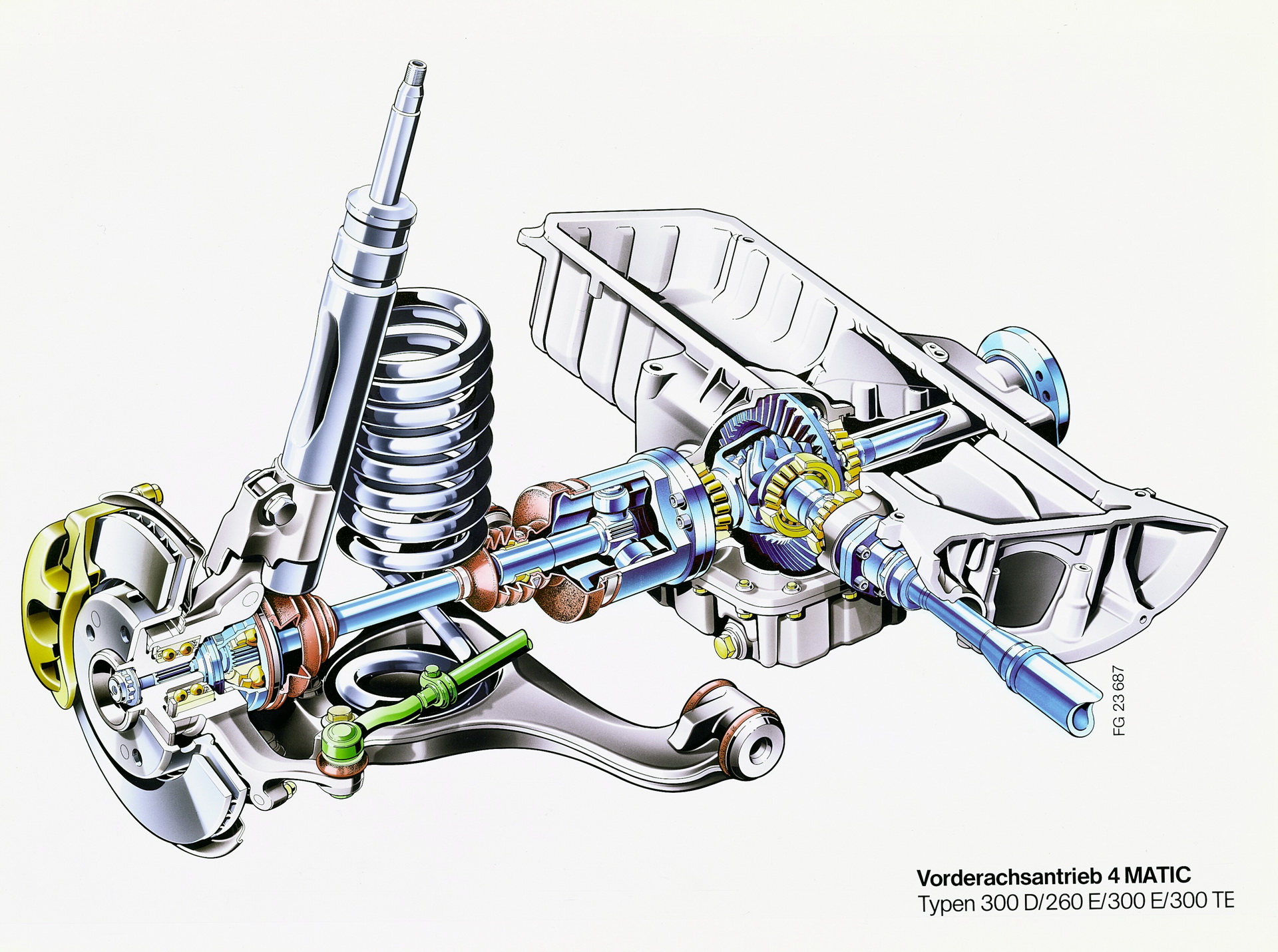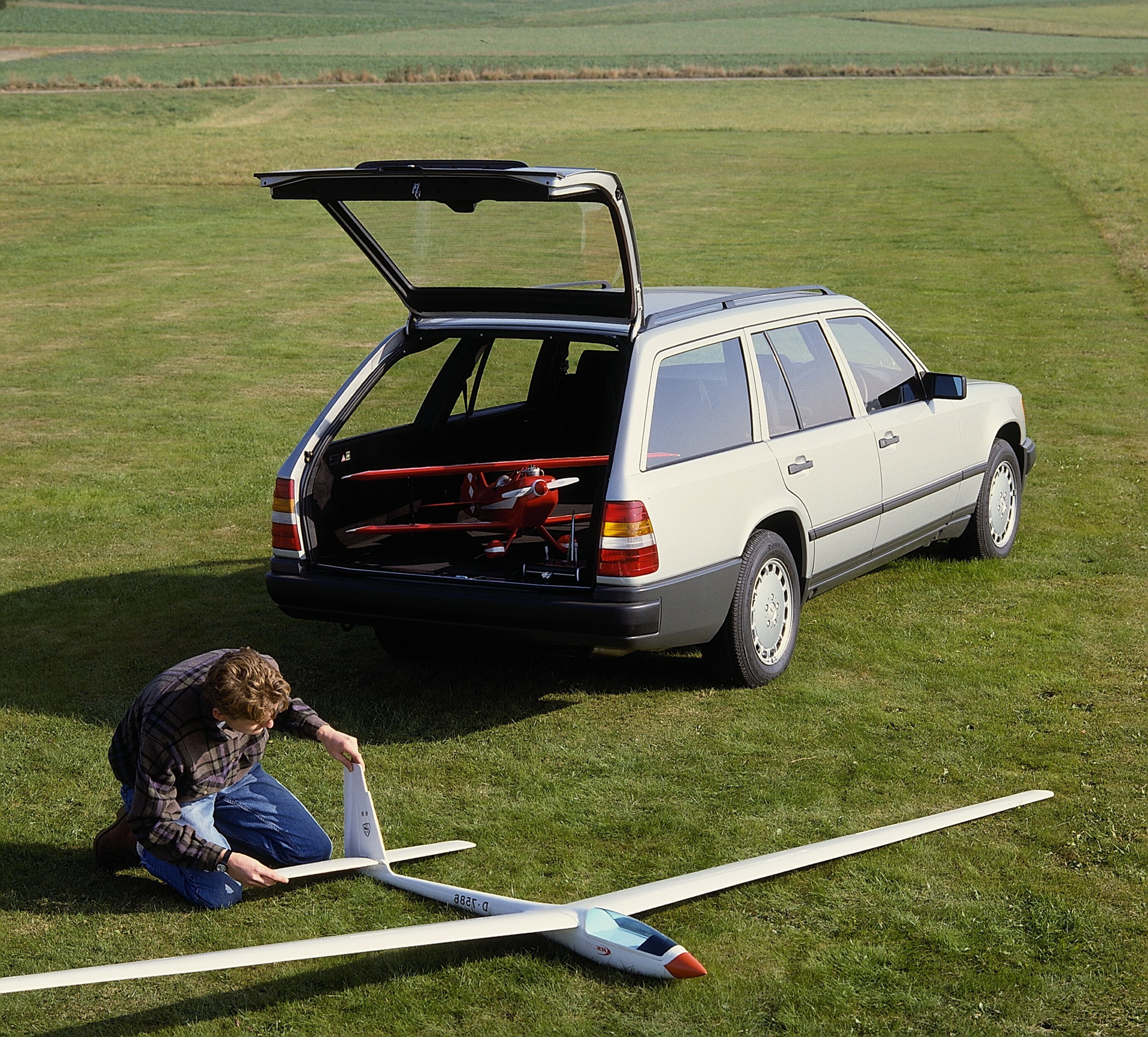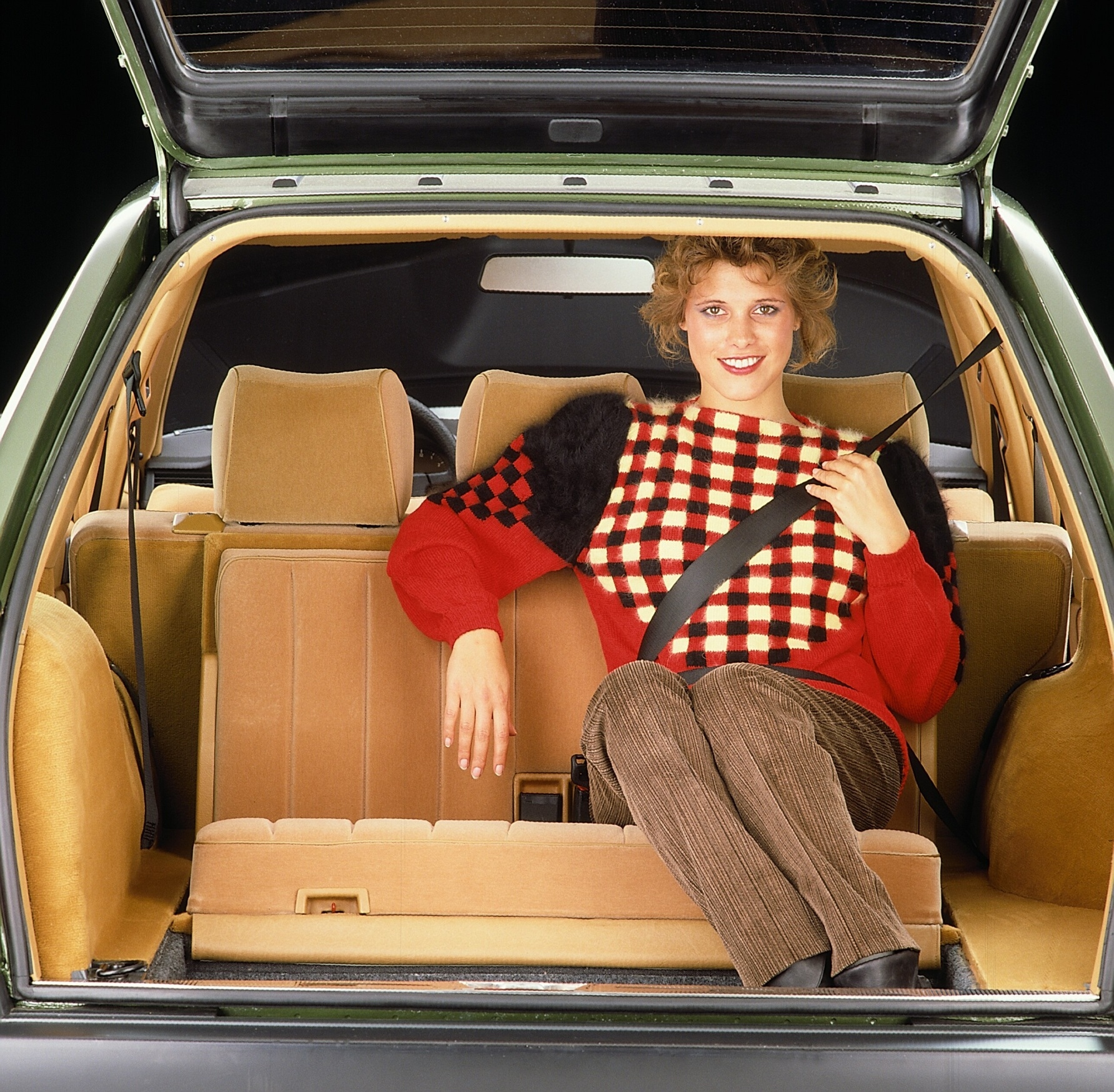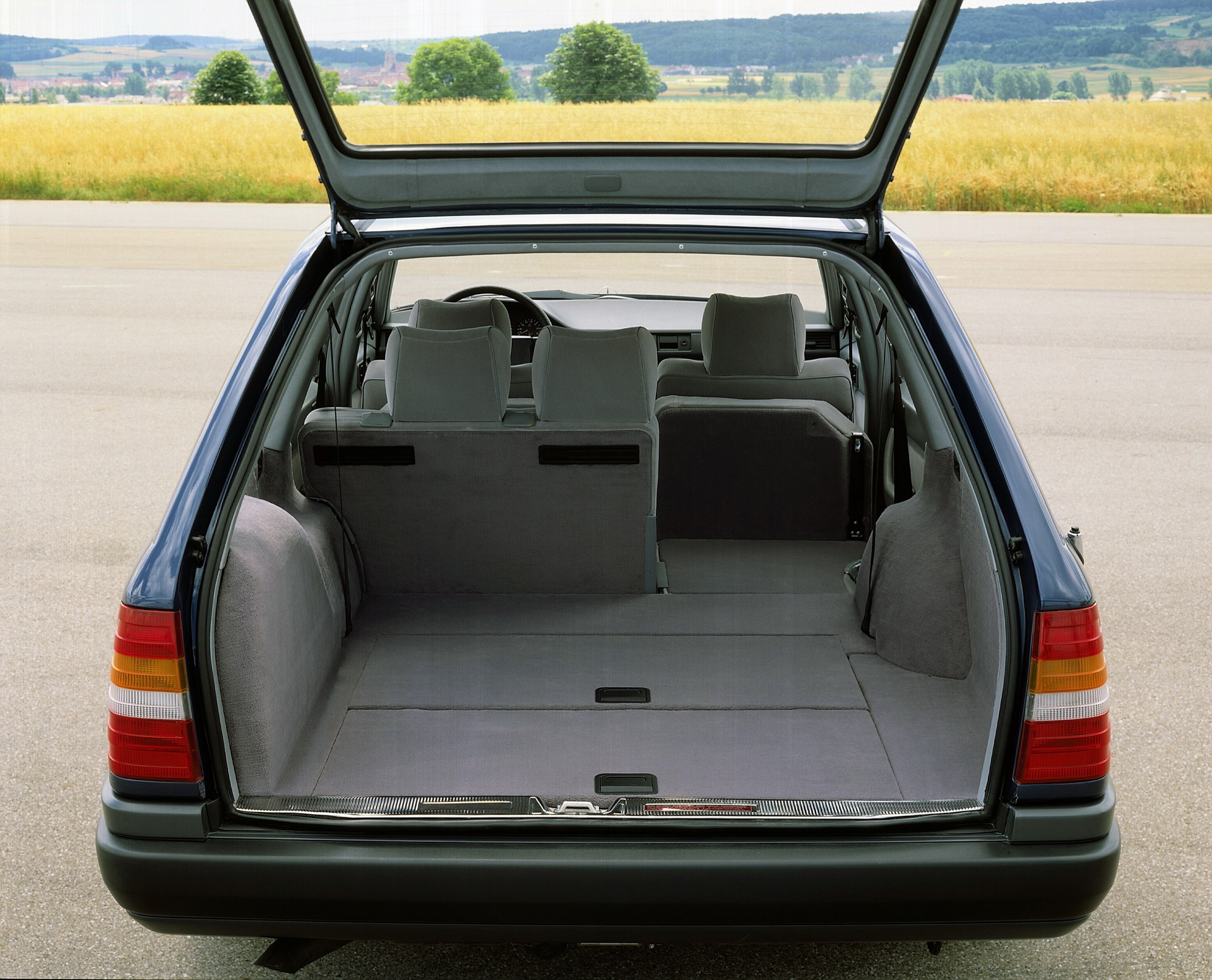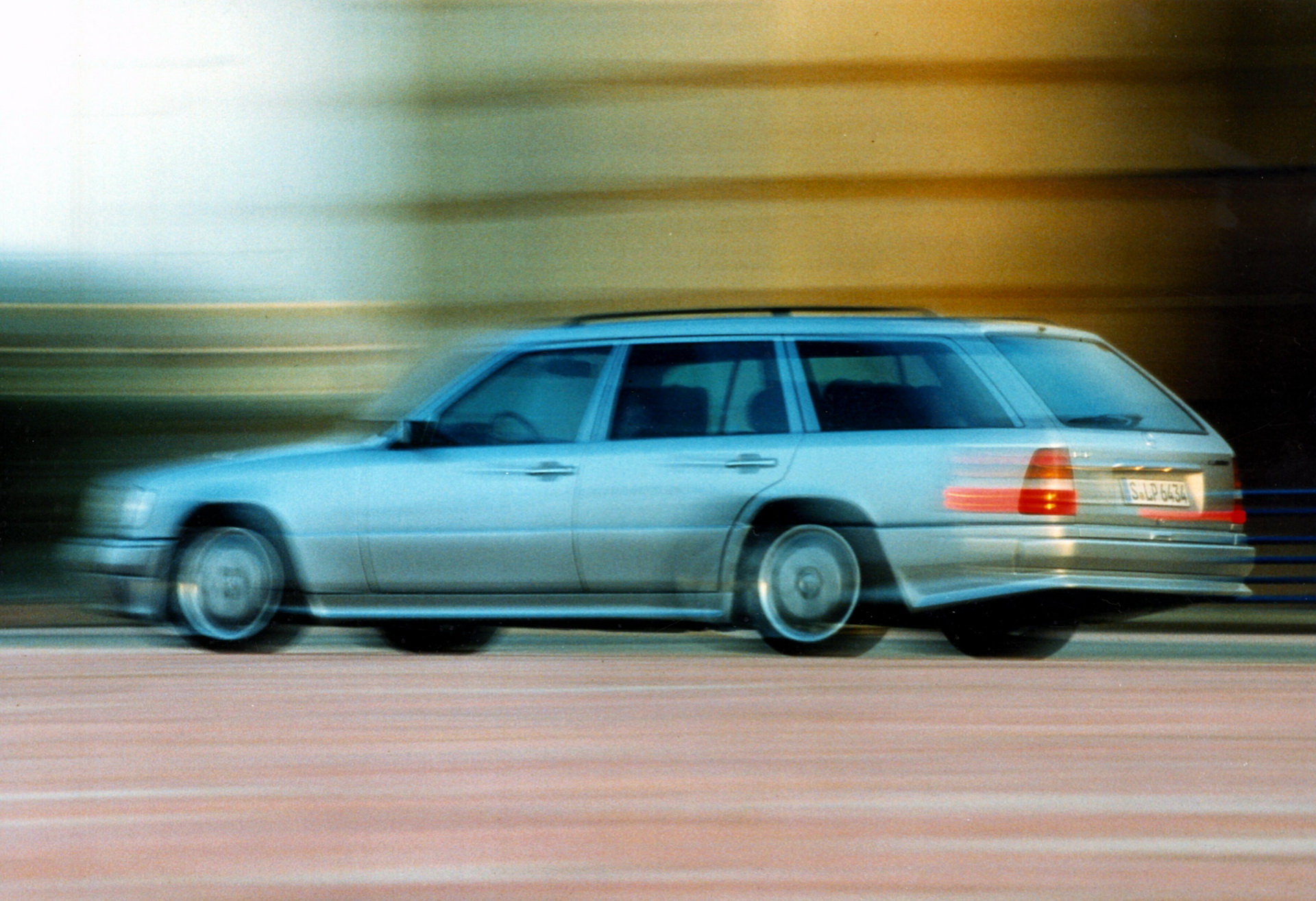Replacing the W123 that had been around since 1976, Mercedes-Benz unveiled the W124 Estate at the 1985 Frankfurt Motor Show one year after the sedan entered production.
Known as the T-Modell in German, with ‘T’ being short for tourism and transport, it was styled by the company’s design department led by Bruno Sacco and came with a generous load area behind the back seats and several technical changes, such as the repositioning of the fuel tank that was installed behind the rear seat backrest in the four-door model.
Read Also: Mercedes-Benz E-Class History From 1926 To 2020 – The Tale Of The Essential Executive Car
The initial engine range of the estate included power units with outputs between 71 HP (72 PS / 53 kW) and 185 HP (188 PS / 138 kW) in the 200 TD and 300 TE, respectively. Save for the 200 T, all wagons with petrol engines featured an emissions control system. As of April 1987, the 4Matic four-wheel drive system, showcased two years before, became available for the predecessor of the E-Class Estate, at an extra charge of 12,000 German Marks, and in 1989, it was facelifted and gained the 217 HP (220 PS / 162 kW) 300 TE-24 variant, whereas others followed over the next couple of years.
The W124 generation was the first one to bear the E-Class designation, following in the footsteps of the smaller C-Class and the larger S-Class. Introduced in 1993, the E-Class Estate was joined that year by the E 36 AMG, which packed a 3.6-liter engine developed in Affalterbach and based on the 3.2-liter unit that was mated to a four-speed automatic transmission. Its 268 HP (272 PS / 200 kW) allowed it to hit a maximum speed of 149 mph (240 km/h).
By 1996, Mercedes-Benz had sold 340,503 units of the E-Class Estate, and around 140,000 coupes, 34,000 cabriolets and 2,213,000 sedans, making it one of the most popular generations of the executive car.



